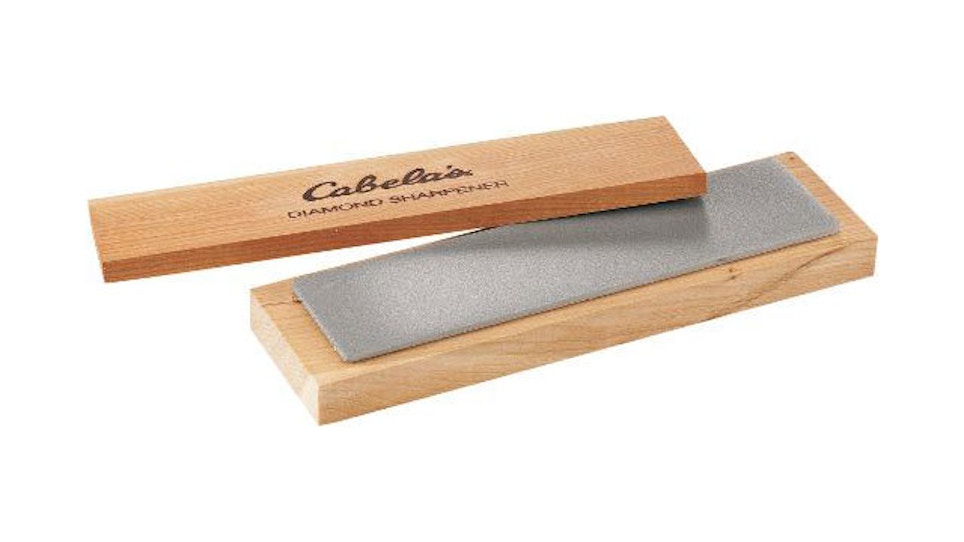For putting a good edge on a broadhead, or for resharpening a knife out in the bush, the most basic option you have is the classic whetstone. The advantages of whetstones, in terms of cost as well as portability, are obvious.
The real trick to sharpening is maintaining a constant angle. One approach is to hold the thumb against the whetstone, with the back of the blade against it, and move the blade over the whetstone. After many strokes, there is an imprint, or a sort of groove, in the thumb. When the knife is turned over, it can be placed in that same groove repeatedly to maintain the angle.
Burr On, Burr Off
Ultimately that is what comes down to. The burr, of course, is nothing more than a thin metal lip that forms along the edge of the blade that is away from the abrasive. You can feel it with thumb or finger. The burr is removed by turning the blade over and sharpening that side. This process is repeated with gradually reduced pressure until the burr is eliminated on both sides and a razor-sharp edge remains.
Patience is a virtue here, as in hunting. If you are failing to put an edge on an object, chances are you are not employing proper technique or putting sufficient time into the effort. (Edge guides can help maintain a precise edge against a whetstone.) If your edges are not holding up, then you are using the wrong angle or bevel for the purpose, or the steel being sharpened is inferior, or has been ruined.
Some 3-blade broadheads can be sharpened simply by placing two edges against a flat stone simultaneously. The blades are at the correct angle to provide a good edge using this technique.
The Best Kind Of Whetstone?
Most experts I’ve spoken with swear by diamond hones, which will sharpen even the hardest steel knife blades. Some stones are traditionally used with a little oil as a lubricant, but more modern abrasive sharpeners don’t require it.
Any stone will sooner or later begin to fill with filings, or particles of steel, and lose their abrasive quality. A little soap and water, or even water alone, will usually resolve the problem. But the best bet for both lubrication and cleaning is to follow the manufacturer’s suggestions.
Most experts agree is that big, wide stones are faster and easier to use than small ones. On the other hand, for travel or for use in remote areas, a smaller stone might be worth the extra time and effort that using it entails.
Test Blade Sharpness
Shaving hair is a time-honored test of an edge. Bowhunters probably do not want their hunting knives to be quite that sharp, but certainly that is the standard by which broadhead sharpness is measured. A better test might be laying the edge against a thumbnail and pulling it across. If it bites in, the edge is sharp.






